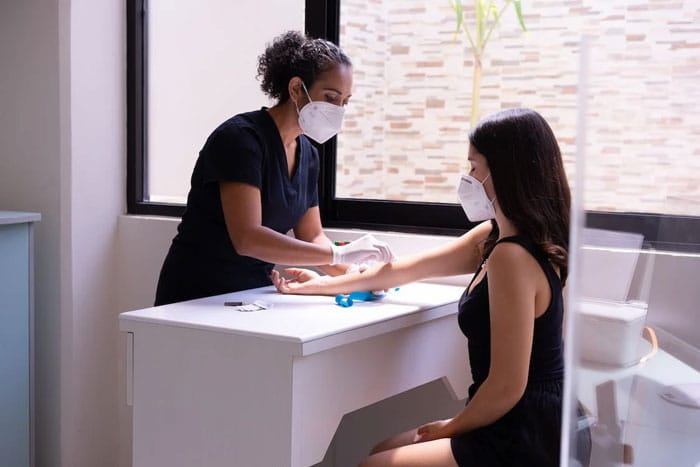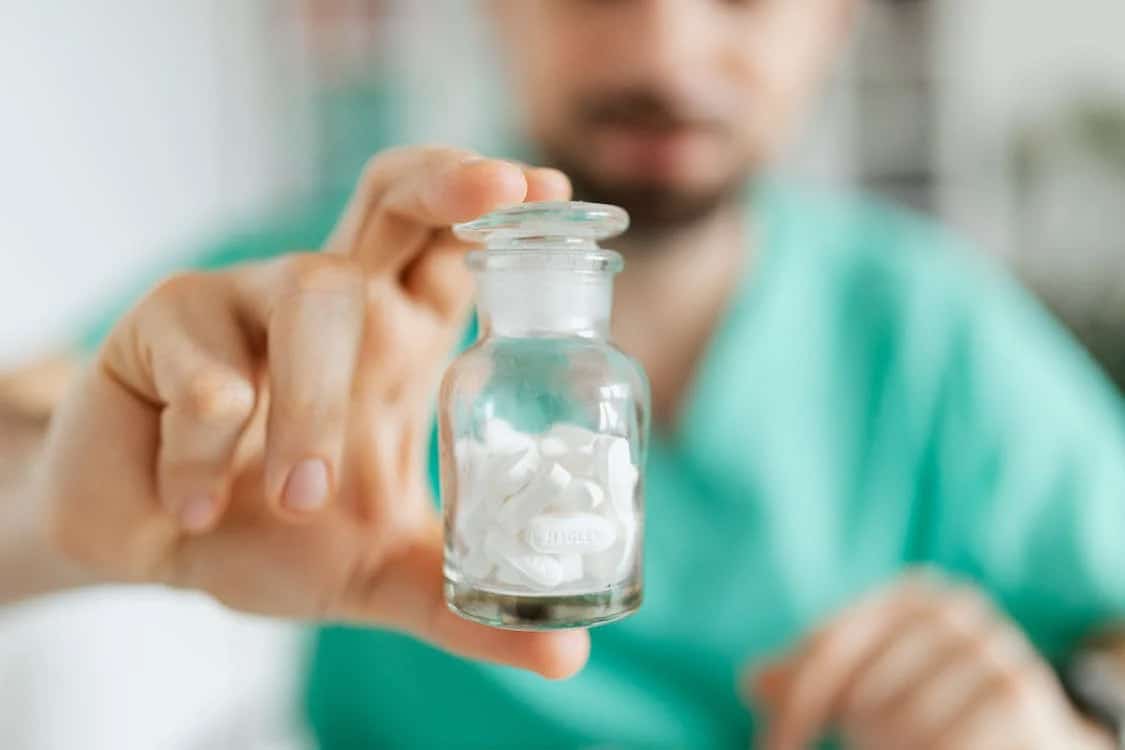
This post provides detailed information on the phlebotomist job description, including the key duties, tasks, and responsibilities they commonly perform.
It also highlights the major requirements you may be expected to fulfill to be hired for the phlebotomist role by most recruiters/employers.
What Does a Phlebotomist Do?
Phlebotomists are laboratory technicians who draw blood samples from patients in a process known as venipuncture.
The phlebotomist job description entails opening up patients’ blood vessel for diagnostic or therapeutic purposes.
Phlebotomists in performing their duties use a fleam to carry out a blood-letting process.
They ensure blood collection instruments and environment are sterile to minimize risk of contamination.
Their role also involves explaining to patients the details of procedure in order to calm them and help relieve anxiety.
Phlebotomists usually insert hypodermic needle into patient’s blood vessel to draw off blood into a tube for diagnosis.
They obtain at least two patient identifiers to confirm patient identity prior to venipuncture.
They also ensure patients are as comfortable as possible before and during a phlebotomy process.
As part of their responsibilities, phlebotomists ensure blood tubes are properly labelled right after a procedure to avoid mismatch.
They take blood samples to a medical laboratory where they are analyzed to determine cell count and blood type compatibility.
They also ensure compliance with established safety and health procedures during phlebotomy operations.
Phlebotomists perform job duties in accordance with instructions issued by a physician.
Their work description also entails collaborating with nurses in collecting therapeutic drug monitoring assays to ensure appropriate drug dose to collection time.
They also keep track of collected specimens by recording date and time of collection.
In fulfilling their role, phlebotomists discard analyzed blood samples and other toxic fluids according to standards for proper disposal.
They usually calibrate and maintain machines used for plasma collection and also maintain accurate records by inputting data on a computer.
Adhering to laws and policies regarding the handling of hazardous materials is also a description of phlebotomists. They participate in educational programs and conferences to update job knowledge.
The phlebotomist career requires a high school diploma and one year phlebotomy program in a technical or vocational school to get into.
Qualities needed to be effective on the job include attention to details, dexterity, and empathy.
Phlebotomist Job Description Example/Template
Phlebotomists perform various functions, which include the tasks, duties, and responsibilities shown in the job description example below:
- Verify patient identity by crosschecking medical records and patient wristband
- Perform venipuncture using specialized medical instruments such as hypodermic needle to obtain blood specimen
- Maintain the integrity of collected samples by applying aseptic techniques and complying with isolation procedures
- Conduct bedside glucose test to assess glucose levels and report to physician
- Carry out bleed-time tests to alert a pathologist when results fall below standard
- Comply with departmental procedures and testing schedule to maintain quality results
- Document all phlebotomy operations from collection to analysis and diagnosis
- Transfer blood specimen into tubes and label appropriately
- Explain to patients the details of a procedure to address their concerns and reassure them
- Administer intramuscular and subcutaneous injections within boundaries of licensing
- Perform hemoglobin tests to ensure healthy levels of iron in donor blood
- Ensure the safety, health and comfort of plasma or blood donors during and after a procedure
- Carry out saline flushes and dispense anticoagulant drugs through intravenous lines
- Present reports and results of an analysis to a physician for interpretation and diagnosis
- Train and supervise the activities of trainee phlebotomists.
Requirements – Skills, Abilities, and Knowledge – for Phlebotomist Job
If you are seeking to work as a phlebotomist, the following are major requirements most employers commonly set for applicants to meet to qualify for the role:
- Education and Training: To become a phlebotomist, you require a high school diploma which allows you entry into a one year phlebotomy program offered by technical/vocational schools or community colleges. A certification from organizations such as the National Center for Competency Testing or the American Society for Clinical Pathology is necessary to secure a job as a phlebotomist as some states require phlebotomists to be certified
- Attention to details: Phlebotomists are able to draw correct amounts of blood, label them correctly and enter accurate information into database
- Dexterity: They are able to operate medical tools and equipment in carrying phlebotomy procedures
- Empathy: They are sympathetic towards to the plight of patients thus they show care and support them emotionally.
Conclusion
If you need to make a description for the phlebotomist job in your organization, you can easily and quickly produce one by adopting the sample copy provided in this post.
You will be able to create a detailed phlebotomist job description that completely captures the duties and responsibilities of the position, which can therefore increase your chances of attracting the best candidates if you are hiring for the position.
You will also find this post helpful if you are thinking of getting into the phlebotomist career as you will be able to increase your knowledge of what they do.












